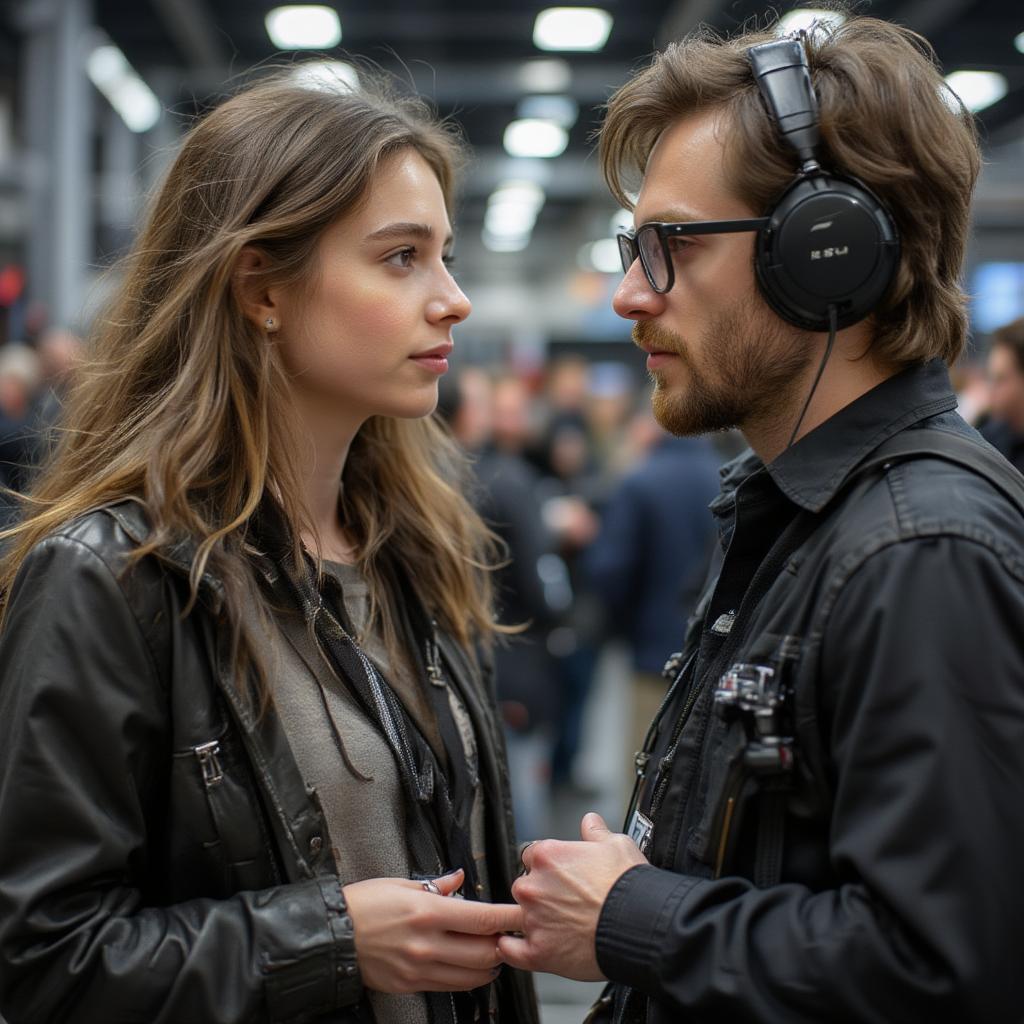The Life of a Cinematographer: Behind the Lens and Beyond the Frame

A cinematographer, also known as a director of photography (DP), is the artist responsible for the visual storytelling of a film. They shape the mood, atmosphere, and overall aesthetic through their mastery of camera movement, lighting, composition, and color. More than just operating a camera, they translate the director’s vision into a tangible, visual language that resonates with audiences. This involves a deep understanding of technical aspects, creative collaboration, and a relentless pursuit of visual excellence.
A cinematographer’s journey is far from glamorous. It demands long hours, intense problem-solving, and constant adaptation to challenging environments and ever-evolving technology. From pre-production planning to post-production color grading, every stage demands their meticulous attention to detail. But what truly defines the Life Of A Cinematographer is the passion for visual storytelling and the unwavering commitment to bringing a story to life through the lens.
The Cinematographer’s Toolkit: Mastering the Art of Visual Storytelling
A cinematographer’s expertise extends far beyond simply operating a camera. They are masters of visual language, employing a diverse range of tools and techniques to craft compelling narratives. This includes a deep understanding of:
- Camera Movement: From subtle pans and tilts to dynamic tracking shots and crane movements, the cinematographer uses camera movement to guide the viewer’s eye, create visual rhythm, and evoke specific emotions.
- Lighting: Light is the cinematographer’s paintbrush. They manipulate light and shadow to shape the mood, highlight key elements, and create depth and dimension within the frame. They must be proficient with various lighting techniques, from natural light to complex studio setups.
- Composition: Framing and composition are crucial for visual storytelling. The cinematographer carefully arranges elements within the frame to create balance, direct attention, and convey meaning. They consider factors like the rule of thirds, leading lines, and negative space to create visually engaging compositions.
- Color: Color palettes evoke powerful emotions and contribute significantly to the overall aesthetic of a film. The cinematographer collaborates with the director and production designer to establish a color scheme that supports the narrative and enhances the visual experience.

From Script to Screen: The Cinematographer’s Workflow
The life of a cinematographer involves a complex workflow that spans all stages of filmmaking.
- Pre-Production: This crucial phase involves collaborating with the director to develop a visual plan for the film. They discuss the script, storyboard key scenes, scout locations, and determine the overall visual style. Choosing the right camera, lenses, and lighting equipment are vital decisions made during this stage. Aspiring cinematographers can learn these fundamental skills in best film schools for cinematography.
- Production: On set, the cinematographer oversees the camera and lighting crew, ensuring that each shot is executed according to the pre-visualized plan. They work closely with the director to achieve the desired visual effect and capture the essence of each scene. This involves continuous adjustments, problem-solving, and creative collaboration.
- Post-Production: The cinematographer’s involvement continues into post-production, where they work closely with the colorist to achieve the final look of the film. Color grading allows them to refine the colors, adjust contrast, and enhance the overall visual aesthetic. Studying color grading is often included in film studies masters programs.
The Challenges and Rewards of a Visual Storyteller
The path of a cinematographer is not without its challenges. Long hours, demanding schedules, and constant pressure to deliver exceptional visuals are part of the job. However, the rewards are equally significant. The ability to contribute to a collaborative art form, to shape the visual language of a film, and to connect with audiences on an emotional level is deeply fulfilling. For individuals passionate about film, exploring best film courses online could be a valuable starting point.
What Skills are Essential for a Cinematographer?
A successful cinematographer possesses a blend of technical proficiency, artistic vision, and strong interpersonal skills. Technical expertise in camera operation, lighting, and composition is fundamental. However, equally important are creativity, visual storytelling ability, and the ability to collaborate effectively with a team. “A cinematographer must not only understand the technical aspects of filmmaking but also possess a keen eye for visual storytelling and the ability to translate emotions into images,” says renowned cinematographer, Ava Thorne.
How Do You Become a Cinematographer?
There are various paths to becoming a cinematographer. Formal education through top rated film schools provides a strong foundation in film theory and practical skills. However, many successful cinematographers have honed their craft through hands-on experience, working their way up from entry-level positions on film sets. Online resources like best online courses for cinematography offer another avenue for learning and skill development. “The key is to constantly learn, experiment, and refine your craft,” advises veteran cinematographer, James Blackwood. “Seek out mentors, collaborate on projects, and never stop pushing your creative boundaries.”
Capturing the Vision: The Enduring Power of Cinematography
The life of a cinematographer is a demanding yet rewarding journey. It requires a unique blend of artistic vision, technical expertise, and collaborative spirit. From the pre-production planning stages to the final color grading in post-production, the cinematographer plays a crucial role in shaping the visual language and emotional impact of a film. Ultimately, they are the storytellers who paint with light, capturing the essence of a narrative and bringing it to life on the screen.
The ability to analyze and critically evaluate footage is crucial for a cinematographer.




